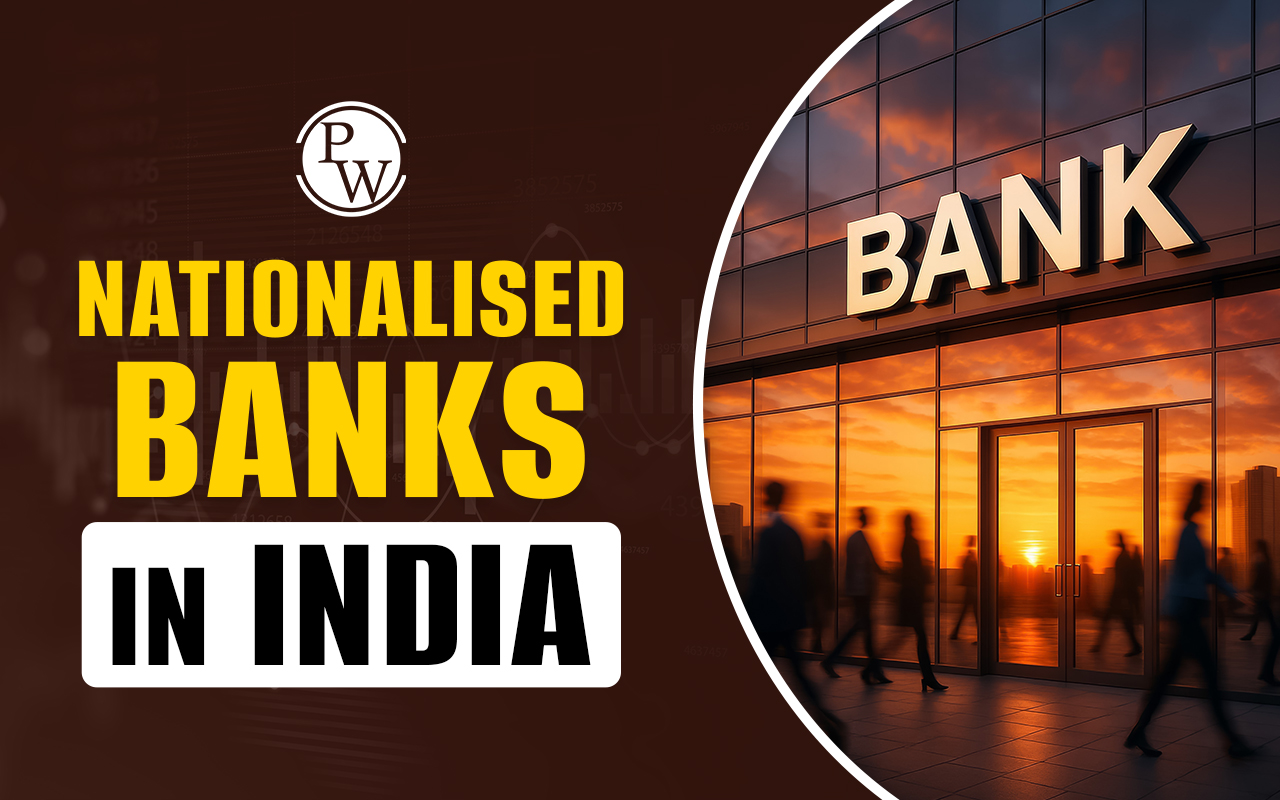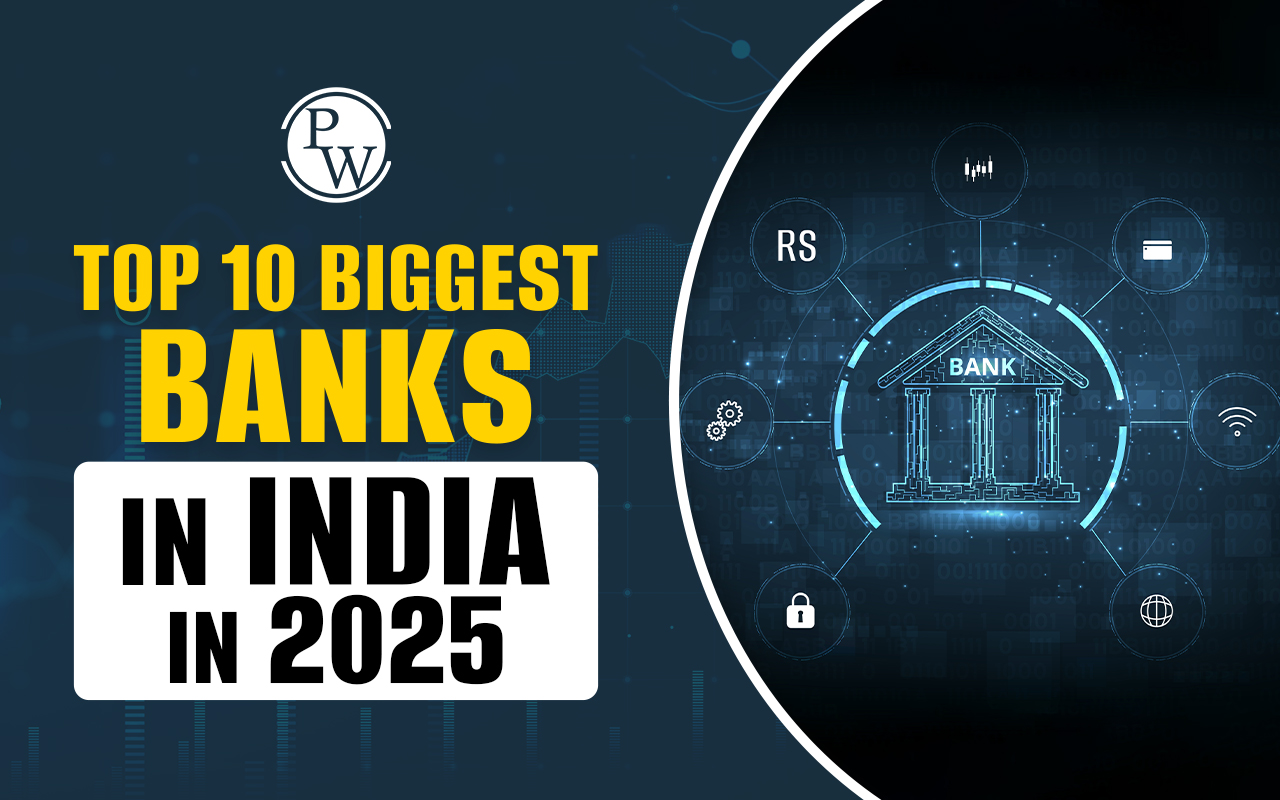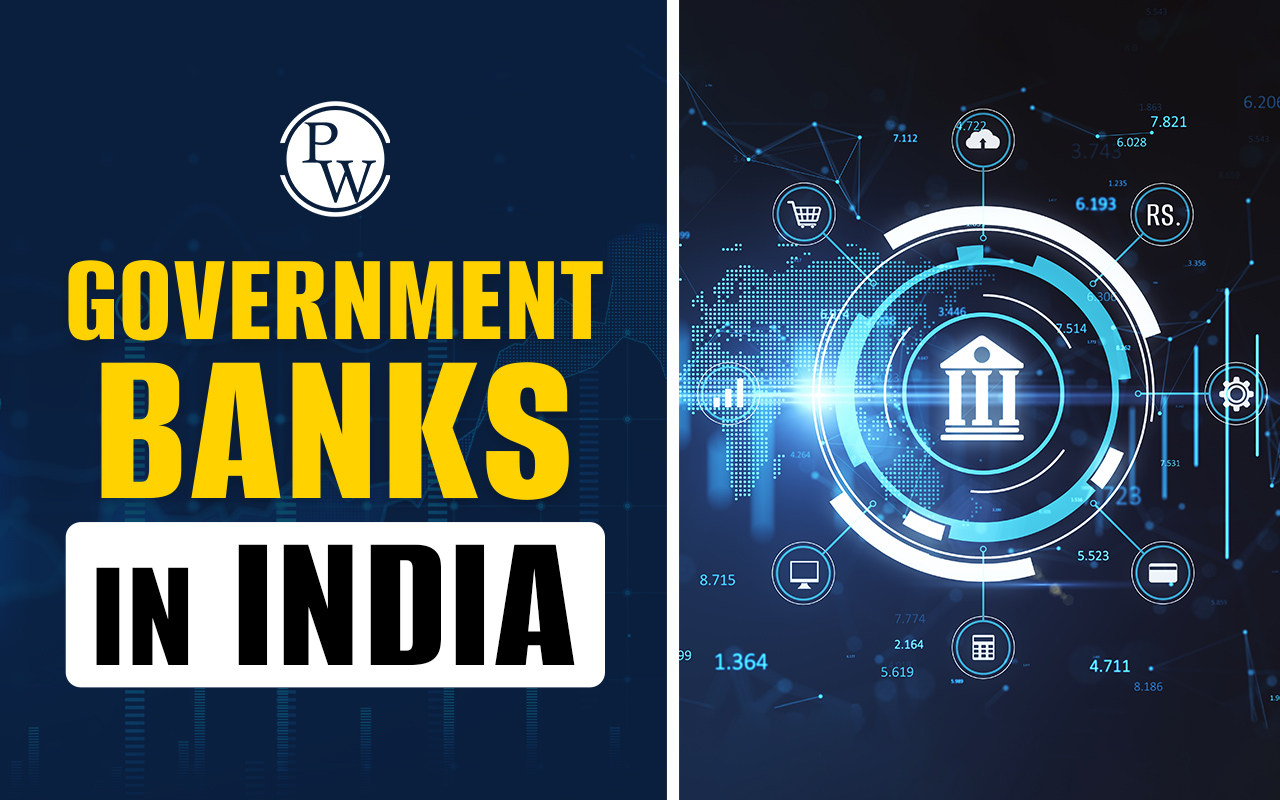

Public Sector banks (PSBs) are banks owned by the government in which the central government holds the majority of shares. These banks focus on providing affordable and accessible banking services to all sections of society, especially in rural and underserved areas. PSBs play a key role in promoting financial inclusion, supporting government schemes, and offering credit to priority sectors like agriculture, small businesses, and education. With wide branch networks across the country, they help drive economic growth and ensure social welfare through trusted financial services. Read complete details about public sector banks, top 10, challenges, and more below.
What are Public Sector Banks?
Public sector banks, also called nationalised banks, are government-owned financial institutions where more than 50% of the shares are held by the central or state government. These banks are regulated by the Reserve Bank of India (RBI) and form a major part of India’s banking system. Public sector or nationalised banks aim to offer affordable and accessible banking services, especially in rural and low-income areas.
These banks play a key role in implementing government schemes like Jan Dhan Yojana, Mudra Loans, and Startup India. Public sector banks of India also help finance sectors like agriculture, small businesses (MSMEs), and infrastructure. Known for their security and wide network, public sector or nationalised banks support financial inclusion and social welfare. Examples include State Bank of India (SBI), Punjab National Bank (PNB), Bank of Baroda, and Canara Bank.
Role of Public Sector Banks in Indian Economy
Public sector banks play a crucial role in strengthening India’s economy by promoting financial inclusion and supporting government initiatives. They provide banking services to remote and rural areas where private banks may not operate widely. By extending credit to agriculture, small industries, and priority sectors, they help boost employment and livelihood. Public sector banks also implement major government schemes, helping to distribute subsidies and welfare benefits efficiently. Their government backing adds stability and trust in the banking system.
List of Top 10 Public Sector Banks in India
In India, Public Sector Banks (PSBs) are banks in which the government of India owns more than 50 per cent. These banks are of significant contribution to the economy of the country in the sense that they offer banking services to all segments of the population and in particular those living in remote and backward regions.
The main purpose of PSBs is to ensure financial inclusion, support government welfare schemes, and provide loans for farming, small businesses, infrastructure, and more. The Indian government nationalized several banks in 1969 and again in 1980 to take control of credit distribution and promote equal growth across the country.
Today, India has many public sector banks, but here are the top 10 PSBs, ranked based on their market value (capitalization), number of customers, national reach, and their importance to the economy in 2025.
1. State Bank of India (SBI)
State Bank of India is the biggest bank of India that has a rich history since the year 1806 when it was begun as the Bank of Calcutta. It was nationalized and changed to SBI in 1955. Currently, SBI has 23 percent of the banking market share and is a Fortune 500 entity.
-
Over 22,500 branches in India and abroad
-
Strong role in government initiatives like Jan Dhan Yojana, Mudra Loans, and Start-up India
-
Offers personal, corporate, and digital banking services
-
Known for its extensive reach and trusted reputation
2. Punjab National Bank (PNB)
Punjab National Bank is India's second-largest PSB that was established in 1894 by freedom fighter Lala Lajpat Rai.
-
Headquartered in New Delhi
-
Serves over 180 million customers
-
Provides loans for agriculture, businesses, and MSMEs
-
Strong network and high customer trust
3. Bank of Baroda (BoB)
Bank of Baroda started in 1908 under Maharaja Sayajirao Gaekwad III and has grown into a global bank with branches in over 20 countries. It became stronger after merging with Dena Bank and Vijaya Bank in 2019.
-
Headquarters in Vadodara, Gujarat
-
Focus on technology and international banking
-
Wide range of services including wealth management and NRI banking
-
One of the top three PSBs by size
4. Canara Bank
Canara Bank, established in 1906, became the fourth-largest PSB after merging with Syndicate Bank. It is headquartered in Bengaluru and has also a long reputation of serving rural and semi-urban places.
-
Vast network of branches with customer-centric services
-
Provides loans such as housing, personal, SME, and agricultural loans
-
A lot of focus on the remote access to banking services (digital banking)
5. Union Bank of India
Founded in 1919, Union Bank expanded significantly after merging with Andhra Bank and Corporation Bank in 2020. Headquartered in Mumbai, it supports financial inclusion and government welfare schemes.
-
Comprehensive retail and corporate banking services
-
Focus on MSME financing and digital transformation
-
Builds a diverse and loyal customer base
6. Indian Bank
Established in 1907 and headquartered in Chennai, Indian Bank grew stronger by merging with Allahabad Bank in 2020.
-
Offers loans, savings, fixed deposits, and digital banking
-
Active in rural banking, microfinance, and government schemes
-
Known for reliability and efficient service
7. Bank of India (BoI)
Bank of India, an institution founded by the Mumbai business community in 1906 and nationalized in 1969, has a large domestic and international network with around 5200 branches in large financial centers across the world.
-
Offers retail, investment, trade finance, and corporate banking
-
Strong presence in Tier-2 and Tier-3 cities
-
Caters to a wide customer base from individuals to institutions
8. Central Bank of India
Central Bank of India was established in 1911 and was the first fully Indian-owned commercial bank. It introduced many firsts in banking like the savings account and credit card.
-
Focus on affordable banking for low-income groups
-
Active supporter of government subsidy and loan schemes
-
Promotes financial literacy and social development
9. Indian Overseas Bank (IOB)
Indian Overseas Bank was established in 1937 with primary banking activities in foreign exchange and overseas banking. The bank is headquartered in Chennai and has an extensive international presence.
-
Provides export-import banking, MSME loans, and microfinance
-
Caters to both Indian and international customers
-
Important player in international trade finance
10. UCO Bank
UCO Bank, formerly United Commercial Bank, was founded in 1943 and has its headquarters at Kolkata. It also serves in urban and rural places and is growing fast in digital banking.
-
Focuses on MSME support, startup funding, and foreign exchange
-
Promotes financial inclusion through modern banking solutions
-
Popular among young, tech-savvy customers
Most Trusted Public Sector Banks in India
The following table lists the most trusted public sector banks in India in 2025, known for their reliability, extensive reach, and customer service.
|
Most Trusted Public Sector Banks in India |
||
|---|---|---|
|
Bank Name |
Key Strengths |
Branch Network (Approx.) |
|
State Bank of India |
Largest, extensive services, govt backed |
22,500+ |
|
Bank of Baroda |
Strong retail and corporate banking |
9,693+ |
|
Punjab National Bank |
Wide branch network, robust loan portfolio |
10,209+ |
|
Canara Bank |
Focus on rural credit and digital services |
9,816+ |
|
Union Bank of India |
Diverse banking products, government schemes |
8,572+ |
Challenges of Public Sector Banks
Public Sector Banks (PSBs) in India face several challenges that affect their performance:
-
Outdated Technology: Many PSBs use old systems, slowing digital progress and tech adoption.
-
Declining Low-Cost Deposits: CASA deposits are falling as customers prefer digital wallets and mutual funds, reducing cheap funds.
-
Narrowing Margins: Rising costs and competition squeeze profits, making lending harder.
-
Non-Performing Assets: Legacy bad loans still weigh heavily on their balance sheets.
-
Government Control: Ownership limits flexibility and innovation.
-
Slow Digital Growth: PSBs lag in mobile banking and cybersecurity compared to private banks.
-
Talent Issues: Difficulty attracting skilled staff due to rigid HR policies and lower pay.
-
Compliance Pressure: Need to meet new environmental and data privacy regulations.
Public Sector Banks vs Private Banks in India
Public sector banks and private banks in India have distinct characteristics, ownership, and roles within the banking sector. Understanding the differences helps customers and investors choose the right bank based on their needs and priorities.
|
Public Sector Banks vs Private Banks in India |
||
|---|---|---|
|
Feature |
Public Sector Banks |
Private Banks |
|
Ownership |
Majority owned by the government |
Owned by private companies or individuals |
|
Customer Base |
Large, especially in rural and semi-urban areas |
More urban and metro-focused customers |
|
Objective |
Social welfare, financial inclusion |
Profit maximization and shareholder value |
|
Technology Usage |
Slower adoption of new technologies |
Fast adoption of latest banking technologies |
|
Interest Rates |
Generally lower on deposits, higher on loans |
Higher deposit rates, lower loan rates |
|
Branch Network |
Extensive across India including villages |
Mostly urban and metro areas |
|
Job Security |
Higher due to govt backing |
Performance-based, less secure |
|
Pension |
Pension after retirement |
Usually no pension benefits |
If you want to build a career in private banking, Physics Wallah (PW) offers a complete course to help you succeed. The program covers important topics like core banking concepts, communication skills, and interview preparation. You’ll benefit from live classes, daily practice questions, and special doubt-solving sessions to improve your knowledge. This course provides practical, industry-focused training to prepare you for real job challenges. Enroll now and begin your journey in the banking industry!
Public Sector Banks FAQs
What are the public sector banks?
What are the 14 nationalised banks of India?
What is a public bank?
What is the purely state-owned bank?













